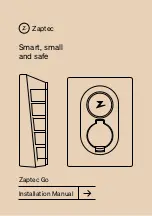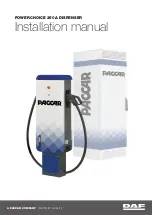
Usage of Electrical Loads During
Conversion
If electric loads are used during conversion, for
example multiple crank cycles or door ajar, check
the battery voltage more frequently than every 7
days and recharge the battery if necessary.
For additional information
Refer to: 1.13 Vehicle Transportation Aids and
Battery Charging Procedure
WARNING: Do not connect to any Ground
or +12 volt potential points other than
that specified in the Owner's Manual.
There is a dedicated charge point under
the hood. Failure to comply may lead to
high current paths that may damage
peripherals and ECU's especially in a
jump start condition.
1. Cold batteries will not readily accept a charge.
Therefore, batteries should be allowed to warm
up to at least 5°C (41°F) before charging. This
may require four to eight hours at room
temperature depending on the initial
temperature and battery size.
2. A battery which has been completely
discharged may be slow to accept a charge
initially, and in some cases may not accept a
charge at the normal charger setting. When
batteries are in this condition, charging can be
started by use of the dead battery switch or
boost charge on chargers that have this facility.
3. To determine whether a battery is accepting a
charge, follow the manufacturers instructions
for the charger, for use of the dead
battery/boost charge mode.
Battery Cable Fixing Torque
The battery cables should be fixed to the terminal
post with a torque of 8.0Nm ± 1.2Nm for battery
+v/-v connection with/without BMS. For
additional information see BMS later in this
section.
Battery Options
Any additional or different batteries must be
checked for correct functionality on a Start-Stop
or Smart Regenerative Charging (SRC) vehicle.
Refer to: 4.8 Electronic Engine Controls (page 148).
Start-Stop and SRC
Refer to: 4.3 Charging System (page 103).
NOTE:
If wrong batteries or incorrect
configuration, Start-Stop or SRC may not function
correctly.
Date of Publication: 03/2018
FORD
TRANSIT
2016.75
4 El
ec
tric
al
113
EU
















































